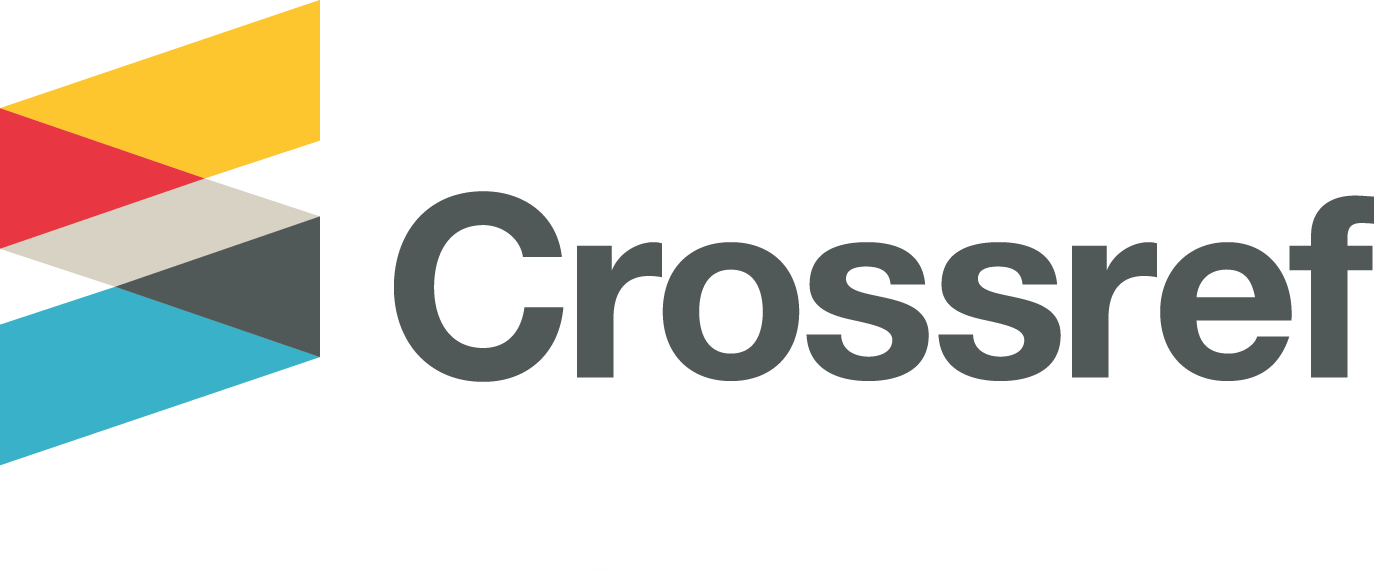Country of Origin Effects and Design Product on Purchase Intention: How South Korean Skincare Become the Main Choice of Consumers?
Abstract
This study aims to determine of the effect of country of origin and product design on purchase intention of South Korea skincare product. This study is using a quantitative approach This subject of this study was 110 consumers of South Korea skincare in X city which were selected using purposive sampling technique. Data collection method used are purchase intention scale, country of origin scale and design product scale. The data analysis technique uses multiple regression statistical tests. The results of the full model study show that there is an influence between country and origin and design product on purchase intention, namely the calculated F value = 5.074 > F table = 3.08, and p = 0.008 < 0.050. On the results of the gradual model regression test, it was found that there was a significant effect between country of origin and purchase intention, namely the value t count = -0.231 > t table = 1.982, and p = 0.014 < 0.050. Then in the design product with purchase intention, it shows that there is a significant effect with the value t count = 2.261 > t table = 1.982, and p = 0.026 < 0.050.
Penelitian ini bertujuan untuk mengetahui pengaruh citra negara asal dan desain produk terhadap minat beli produk perawatan kulit dari Korea Selatan. Penelitian ini menggunakan pendekatan kuantitatif. Subjek dalam penelitian ini sebanyak 110 konsumen produk perawatan kulit dari Korea Selatan di Kota Samarinda yang dipilih menggunakan teknik purposive sampling. Alat ukur yang digunakan dalam penelitian ini menggunakan skala minat beli, citra negara asal, dan desain produk. Teknik analisa data menggunakan uji statistik regresi model berganda. Hasil penelitian model penuh menunjukkan terdapat pengaruh antara citra negara asal dan desain produk terhadap minat beli yaitu dengan nilai F hitung = 5.074 > F tabel = 3.08 dan p = 0.008 < 0.050. Pada hasil uji regresi model bertahap didapatkan adanya pengaruh signifikan antara citra negara asal dengan minat beli yaitu nilai t hitung = -2.486 > t tabel = 1.982, dan p = 0.014 < 0.050. Kemudian pada desain produk dengan minat beli menunjukkan terdapat pengaruh signifikan didapatkan nilai t hitung = 2.261 > t tabel = 1.982, dan p = 0.026 < 0.050.
Keywords
Full Text:
FULL TEXTReferences
Ali, H. (2010). Marketing dari mulut ke mulut. Media Presindo.
Asshidiq, H. (2017). Pengaruh positioning dan persepsi iklan dengan keputusan pembelian ulang produk air mineral Aqua pada remaja akhir. Psikoborneo, 5(4), 538–545.
Badriah, Z. (2005). Boyz only: petunjuk islami kesehatan reproduksi bagi remja. Gema Insani Pres.
BeautyJournal.id. (2018). 3 Skincare Korea dengan konsep unik yang menarik. BeautyJournal.Id. https://journal.sociolla.com/beauty/brand-skin-care-korea-baru/
Belopa, E. M. (2015). Hubungan kepercayaan merek dan persepsi kualitas dengan minat beli ulang produk kecantikan Silver International Clinic Balikpapan. Psikolborneo, 3(1), 64–76.
Cho, C. (2015). The little book of skin care. Imprint of HarperCollins Publisher.
D. Harrison, M., Vivek, C., & Charles, K. (2002). The mpact of initial consumer trust on intentions to transact with a Web Site: A trust building model. The Journal of Strategic Information, 11(3–4), 297–323.
Dinata, J. (2015). Country of origin dan pengaruhnya terhadap persepsi kualitas dan minat beli (Survei pada calon konsumen yang berminat membeli iPad di Indonesia). Jurnal Administrasi Bisnis, 25(1), 1–8.
Engel, J. F., Blackwell, R. D., & Miniard, P. W. (1994). Perilaku konsumen (6th ed.). Binarupa Aksara.
Faryadi, H. E. (2017). Analisis pengaruh citra negara asal, kualitas produk, dan harga terhadap minat beli konsumen Apple Smartphone di Surabaya. Artikel IIlmiah, 1–12.
Gunarsa, S. (2008). Psikologi perkembangan anak dan remaja. BPK Gunung Mulia.
Hanzaee, K. H., & Khosrozadeh, S. (2011). The effect of the country-of-origin image, product knowledge and product involvment on information search and purchase intention. Middle-East Journal of Scientific, 8(3), 625–636.
Herdiana, T., & Alamsyah, D. P. (2017). Country of origin dan citra merek: Upaya meningkatkan minat beli konsumen. Jurnal Inspirasi Bisnis Dan Manajemen, 1(1), 31–40.
Ika K. W., N., & Wilyanda, A. Y. (2020). Minat beli mobil Toyota Agya di Surabya (Toyota Auto200 Jemursari). Jurnal Ilmu Administrasi Dan Manajemen, 3(2), 10–21.
Indriani, H., & Sumantri, R. B. B. (2020). Analisis pengaruh desain produk, harga, dan promosi terhadap minat beli konsumen studi kasus percetakan Seventeen. Jurnal Teknologi Dan Bisnis, 2(2), 35–52.
Intan, K., & Husaini, A. (2019). Pasar produk perawatan kulit punya potensi berkembang. Kontan.Id. https://industri.kontan.co.id/news/pasar-produk-perawatan-kulit-punya-potensi-berkembang
Irvanto, O., & Sujana. (2020). Pengaruh desain produk, pengetahuan produk, dan kesadaran merek terhadap minat beli produk Eiger (Survey persepsi komunitas pecinta alam di kota Bogor). Jurnal Ilmiah Manajemen Kesatuan, 8(2), 105–126.
Jossiasen, A., & Harzing, W. (2008). Descending from the ivory tower: Reflections on the relevance and future of country-of-origin research. European Management Review, 2(1), 1-17.
Kalicharan, H. D. (2014). The effect and influence of country-of origin on consumers’ perception of product quality and purchasing intentions. International Business & Economics Research Journal, 15.
Kementerian Perindustian Republik Indonesia. (2018). Industri kosmetik Nasional tumbuh 20%. https://kemenperin.go.id/artikel/18957/Industri-Kosmetik-Nasional-Tumbuh-20
Koschate-Fischer, N., Diamantopoulus, A., & Oldenkotte, K. (2012). Are consumers really willing to pay more for a favorable country image? A study of country-of-origin effects on willingness to pay. Journal of International Marketing, 20(1), 19–41. https://doi.org/10.1509/jim.10.0140
Kotler, P. (2005). Manajemen pemasaran (Jilid 1 &). Erlangga.
Kotler, P., Bowen, J., & Makens, J. C. (2014). MArketing for hospitality and tourism (6th ed.). Pearson Education.
Kotler, P., & Keller, K. L. (2012). Manajemen pemasaran jilid 1 (12th ed.). Erlangga.
Kustianti, D. D. N. (2019). Pengaruh citra merek dan harga terhadap keputusan pembelian ulang kartu seluler Telkomsel. Psikoborneo, 7(1), 83–92.
Kusumaningrum, S. D. (2021). Kajian pustaka dalam penentuan tipe dan permasalahan kulit wajah. Jurnal SNATi, 1(1), 17–21. https://journal.uii.ac.id/jurnalsnati/article/view/20061
Lee, L. A. (2009). Country-of-origin effects on consumer product evaluation and purchase intention: The role of objective versus subjective knowledge. Journal of International Consumer Marketing, 21(2), 137–151.
Lichterfeld, A., Hauss, A., Surber, C., Peters, T., Blume-Peytavi, U., & Kottner, J. (2015). Evidence-based skin care: A systematic literature review and the development of a basic skin care algorithm. Journal of Wound, Ostomy and Continence Nursing, 42(5), 501–524. https://doi.org/10.1097/WON.0000000000000162
Mufreni, A. N. (2016). Pengaruh desain produk, bentuk kemasan dan bahan kemasan terhadap minat beli konsumen (Studi kasus teh hijau serbuk Tocha). Jurnal Ekonomi Manajemen, 2(2), 48–54.
Mumcu, Y., & Kimsan, H. S. (2015). The effect of visual product aesthetics on consumer’s price sensitivity. Procedia Economics and Finance, 26, 524–528.
Network, E.-I. B. (2019). EBN sector reports: Cosmetics Indonesian French chamber of comerce and industry. In Publication EIBN. https://indonesien.ahk.de/ fileadmin/AHK_%0AIndonesien/Publication/PDF_Publication/EIBN/2019_EIBN_%0ANew_Report_-_Sector_Cosmetics.pdf
Ovrum, A., Alfnes, F., Almli, V. L., & Rickertsen, K. (2012). Health information and diet choices: Results form a cheese experiment. Food Policy, 37(5), 520–529. https://doi.org/10.1016/j.foodpol.2012.05.005
Rachma, D. (2021). Dampak maraknya impor skincare Korea Selatan: Gempuran untuk pasar dalam negeri. Kumparan. https://kumparan.com/d-r-1608711994270460031/dampak-maraknya-impor-skincare-korea-selatan-gempuran-untuk-pasar-dalam-negeri-1w4MDQ7vDZ5/full
Saladin, D. (2007). Manajemen pemasaran. Linda Karya.
Santrock, J. (2007). Perkembangan anak Jilid 2. Erlangga.
Sari, S. P. (2020). Hubungan Minat Beli Dengan Keputusan Pembelian Pada Konsumen. Psikoborneo: Jurnal Ilmiah Psikologi, 8(1), 147.
Stanton, W. J. (2005). Prinsip-prinsip pemasaran. Erlangga.
Sungkar, N. F., & Budiatmo, A. (2016). Pengaruh iklan, atribut produk, dan harga terhadap keputusan pembelian. Jurnal Administrasi Bisnis, 5(1), 35–45.
Suari, M. T. Y., Telagawathi, N. L. W. S., & Yulianthini, N. N. (2019). Pengaruh kualitas produk dan desain produk terhadap keputusan pembelian. Bisma: Jurnal Manajemen, 5(1), 26–33.
Susetyarsi, T. (2013). Analisis pengaruh strategi desain produk terhadap minat beli konsumen pada skuter matik Yamaha merek Mio Fino di Kota Semarang. Jurnal Site Semarang, 5(1), 33–49.
Sutiyem, Ravelby, T. A., & Trismiyanti, D. (2019). Pengaruh desain produk dan harga terhadap minat beli konsumen mebel jati jepara pada Toko Usaha Baru Furniture di Lubuk Alung. Jurnal Kajian Manajemen Bisnis, 8(2), 66–72.
Syamsudin, Wajdi, F., & Praswati, A. N. (2015). Desain kemasan makanan KUB Sukarasa di desa wisata organik Sukerejo Sragen. BENEFIT Jurnal Managemen Dan Bisnis, 19(2), 181–188.
Tjiptono, F., & Chandra, G. (2012). Pemasaran strategik. C. V Andi Offset.
Torres, N. H. J., & Gutiérrez, S. S. (n.d.). The purchase of foreign products: The role of firm’s country-of- origin reputation, consumer ethnocentrism, animosity and trust. Universidad de Burgos: Department of Economics and Business Administration.
Ujianto, & Abdurrachman. (2004). Analisis faktor-faktor yang menimbulkan kecenderungan minat beli konsumen sarung (Studi perilaku konsumen sarung di Jawa Timur). Jurnal Manajemen Dan Kewirausahaan, 6(1), 34–54. https://doi.org/10.9744/jmk.6.1.pp.%2034-53
Umar, H. (2003). Riset pemasaran & perilaku konsumen. Gramedia Pustaka Utama.
Valentina, A., & Istriyanti, R. (2013). Gelombang globalisasi ala Korea Selatan. Jurnal Pemikiran Sosiologi, 2(2), 71–86.
Wibowo, A. (2014). Pengaruh kualitas layanan, harga dan lokasi terhadap keputusan pembelian di “D’STUPID BAKER” Surabaya. Jurnal Ilmu Dan Riset Manajemen, 3(2).
Wicaksono, S. A. (2015). Pengaruh merek dan desain terhadap minat beli konsumen. Universitas Negeri Semarang.
Yanthi, K. P., & Jatra, I. M. (2015). Pengaruh country of origin, brand image, dan perceived quality terhadap minat beli sepeda motor Honda Beat di kota Denpasar. E-Jurnal Manajemen Unud, 4(11), 3852–3881.
Yasin, N. N. (2007). Does image of country-of-origin matter to brand equity? Journal of Product & Brand Management, 16(1), 38–48.
ZAP Clinic Index, & MarkpPlus. (2020). ZAP beauty index 2020. Zap Clinic Index, 1–36. https://zapclinic.com/zapbeautyindex
DOI: http://dx.doi.org/10.30872/psikoborneo.v11i1.9007
Refbacks
- There are currently no refbacks.
Copyright (c) 2023 Psikoborneo: Jurnal Ilmiah Psikologi

This work is licensed under a Creative Commons Attribution-ShareAlike 4.0 International License.
PSIKOBORNEO: Jurnal Ilmiah Psikologi Published by Faculty of Social and Political Siences, University of Mulawarman, Samarinda, East Kalimantan and This work is licensed under a Creative Commons Attribution-ShareAlike 4.0 International License.
________________________________________
PSIKOBORNEO: Jurnal Ilmiah Psikologi
Department of Psychology
Faculty of Social and Political Siences, University of Mulawarman
Jl. Muara Muntai Kampus Gn. Kelua Samarinda 75411
Phone: +62 813 35350368
E-Mail: psikoborneo@gmail.com / psikoborneo@fisip.unmul.ac.id
















